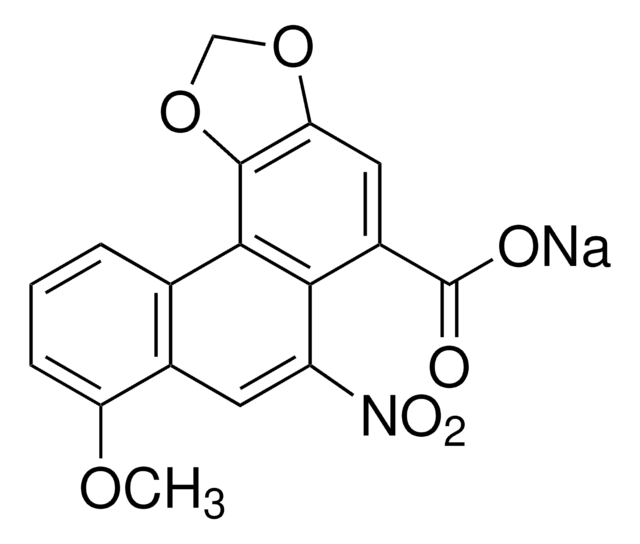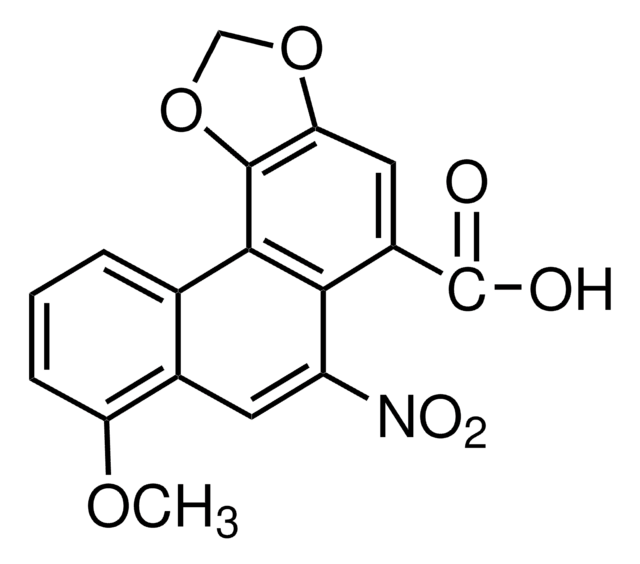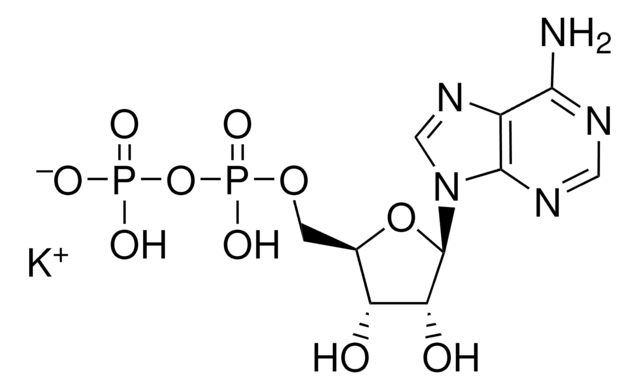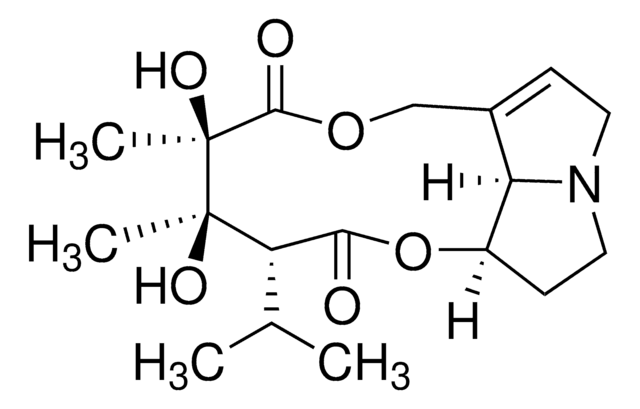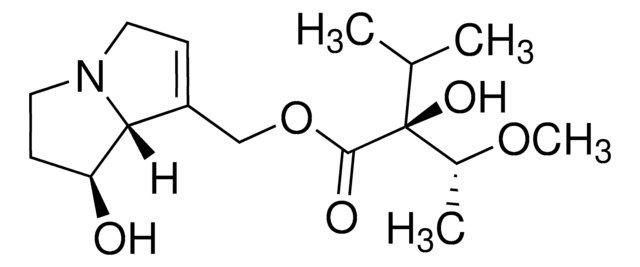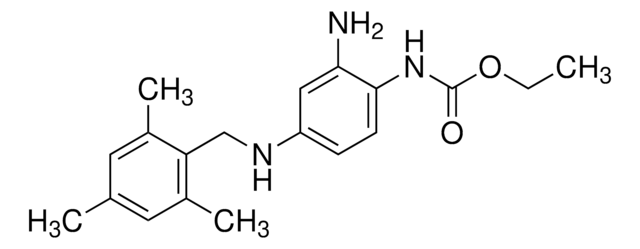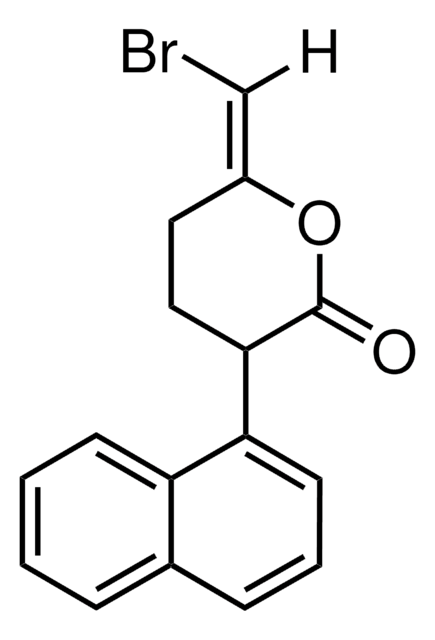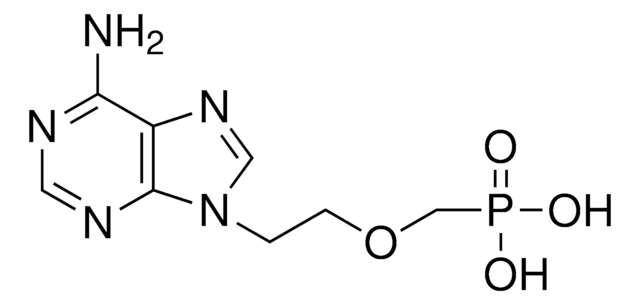A5512
Aristolochic acid I
powder
Sinónimos:
TR 1736
About This Item
Productos recomendados
Ensayo
≥90% (HPLC)
Formulario
powder
color
yellow
mp
269-270 °C
solubilidad
DMSO: soluble
ethanol: soluble
temp. de almacenamiento
2-8°C
cadena SMILES
COc1cccc2c1cc([N+]([O-])=O)c3c(cc4OCOc4c23)C(O)=O
InChI
1S/C17H11NO7/c1-23-12-4-2-3-8-9(12)5-11(18(21)22)14-10(17(19)20)6-13-16(15(8)14)25-7-24-13/h2-6H,7H2,1H3,(H,19,20)
Clave InChI
BBFQZRXNYIEMAW-UHFFFAOYSA-N
¿Está buscando productos similares? Visita Guía de comparación de productos
Descripción general
Aplicación
- as a standard for the analysis of Aristolochia sprucei crude extract by high-performance liquid chromatography
- to study its effects on histone deacetylase 3 (HDAC3) aberration and renal fibrosis
- to induce acute aristolochic acid nephropathy and to study its impact on miRNA and mRNA expression in mice
Acciones bioquímicas o fisiológicas
Palabra de señalización
Danger
Frases de peligro
Consejos de prudencia
Clasificaciones de peligro
Acute Tox. 3 Oral - Carc. 1A - Muta. 1B
Código de clase de almacenamiento
6.1C - Combustible, acute toxic Cat.3 / toxic compounds or compounds which causing chronic effects
Clase de riesgo para el agua (WGK)
WGK 3
Punto de inflamabilidad (°F)
Not applicable
Punto de inflamabilidad (°C)
Not applicable
Equipo de protección personal
Eyeshields, Faceshields, Gloves, type P2 (EN 143) respirator cartridges
Elija entre una de las versiones más recientes:
¿Ya tiene este producto?
Encuentre la documentación para los productos que ha comprado recientemente en la Biblioteca de documentos.
Los clientes también vieron
Artículos
Carcinogenesis and Epigenetics
Nuestro equipo de científicos tiene experiencia en todas las áreas de investigación: Ciencias de la vida, Ciencia de los materiales, Síntesis química, Cromatografía, Analítica y muchas otras.
Póngase en contacto con el Servicio técnico